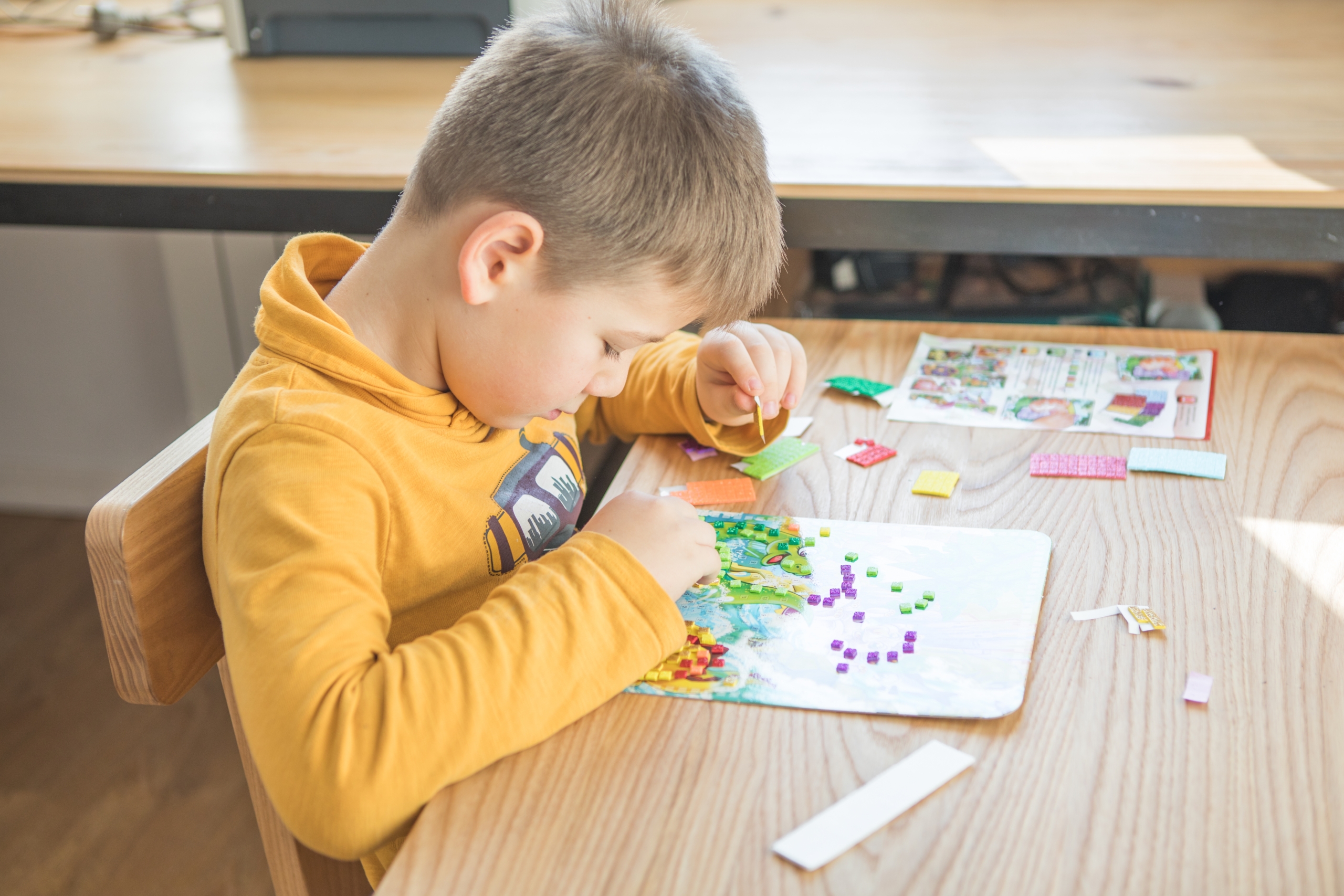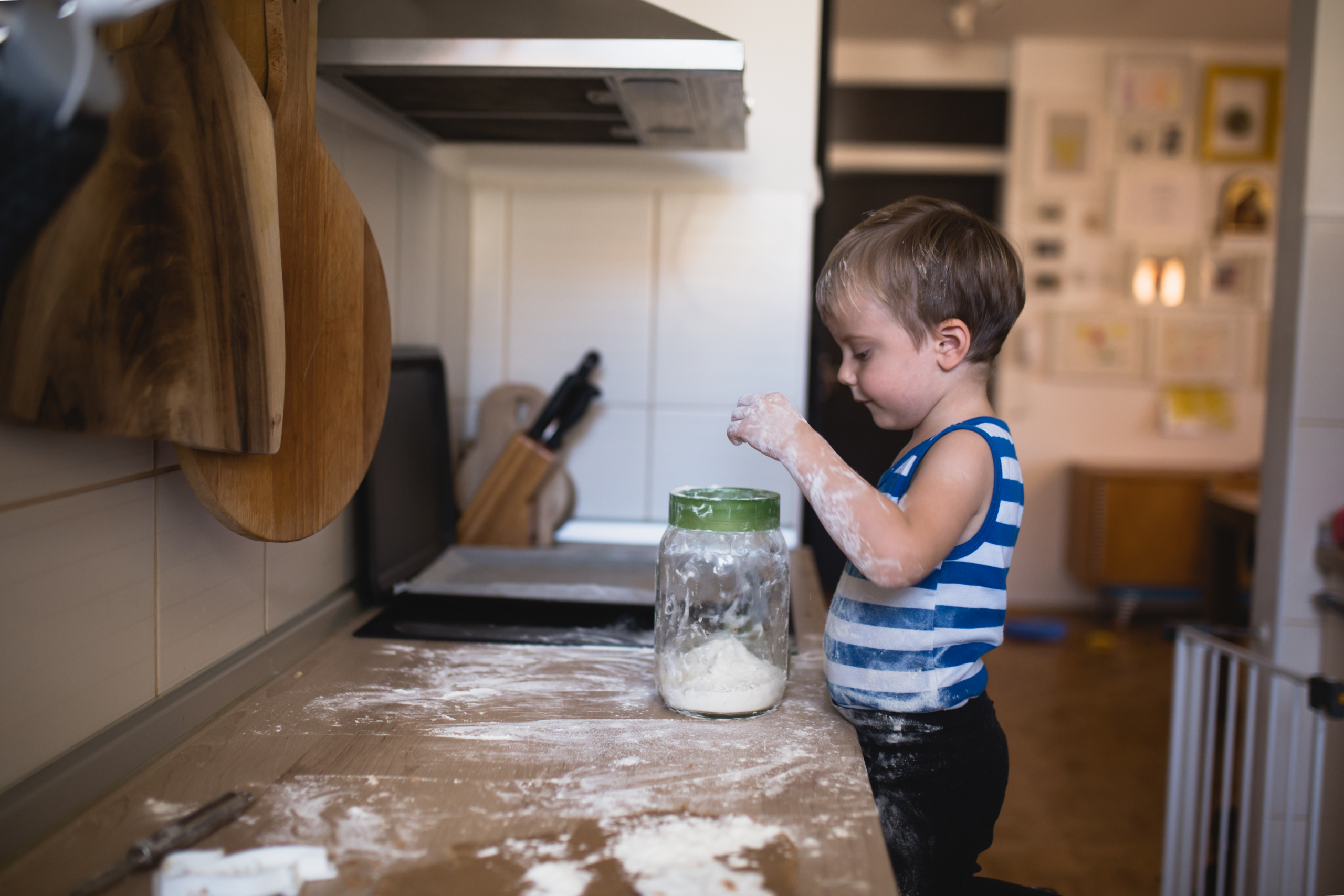Recently we welcomed Gill Kelsall, Food and Nutrition Officer across many of our food services, for an Instagram Live discussion about back to school challenges that all families face. Gill is a qualified and experienced nutritionist, who has supported a wide variety of families and community groups to develop their confidence to cook healthy tasty meals and snacks from scratch. As families around the country begin to get ready for their children to head back to school, we’re sharing Gill’s helpful tips, hints and inspiration to make food less of a hassle and more of a bonding experience.
It is nearly time for children to going back to school, and time for those busy, hectic mornings. What advice can you offer parents to help them through the busy mornings and ensure their children have a healthy breakfast before they leave for school?
I have children so have experienced these busy mornings! My tips would be to …
- Be prepared – prepare everything in advance, do what you can the night before, allow extra contingency time. If your children are old enough, this might be a great opportunity to involve them in the prep process. You’re fostering independence while lightening your load!
- Make it different/exciting – add some spice and colour in the form of cinnamon or nutmeg
- Prep ahead breakfast ideas – overnight oats, breakfast sandwich, pancakes can all be prepared the night before and warmed up in the morning. Creative toppings can add to the fun as children are sitting at the table.
- On the go breakfast ideas – smoothies, breakfast wraps, muffins, banana bread are all easy to take in the car or on the walk to school. This could result from a fun weekend baking session, using up any less-than-best fruit.
- Why a breakfast is important – breakfast sets the children up for the day with vitamins and minerals that aid in brain activity and development. It’s a proven fact that getting the right vitamins and minerals with breakfast will support wellbeing, concentration, mood and assist children in being ready to learn as they start their school day.
There are lots of tasty and quick breakfast ideas on our website. Here are some ideas for storage cupboard staples for your breakfasts
- Eggs- poached, scrambled, boiled, pancakes, omelette, wraps
- Yoghurt
- Oats
- Fruit especially frozen
On the topic of back to school, we know that parents are often faced with the challenge of preparing a healthy pack up for their children to eat at school. Can you give us some ideas on how to prepare a healthy packed lunch box that children will want to eat?
- What to include – carbohydrate (bread/wrap/bagel/pasta/rice); fruit & veg; protein (meat/pulses/egg/dairy) and a drink
- Make it colourful- can your child “eat the rainbow”? Not only does it make a pack-up more interesting but the nutrients in foods of varying colours are the building blocks for a healthy child!
- Little notes of encouragement- write on the banana/orange or leave a note with a simple message or drawing to make your child smile. This doesn’t have to be a regular occurrence but is simply a fun bonus.
- Make some things ahead and store in the freezer- you can freeze yoghurts or even sandwiches (wrap them carefully in freezer-safe wrapping) and then they will defrost during the time before your child needs to eat them at lunch.
- Get children involved in decision making and ideas- you can sit down over the weekend to talk about what your children would like in their lunches which allows you to add items to your shopping list.
- Prep in advance as far as possible- if your children are old enough, allow them to take charge of putting the pack-ups together in the morning before school.
- It doesn’t have to be a sandwich every day – salad, mini quiche, pasta, soup, rice, leftovers from the night before all are lovely treats the next day. During colder months, a warm lunch might be just the comforting meal your child needs.
There are lots more ideas on the Change4Life website – and on Our Voices blog:
I’ve got children of my own and they always come in from school asking for something to eat. Can you offer any ideas for after school snacks – that are easy to prepare and tasty?
- Prep in advance ideas: muffins, omelettes, pancakes which can be stored in the fridge or freezer and defrosted in time for after school.
- Make it an activity– fruit kebabs, fruit/veg art, making a muffin – savoury or sweet. This puts your children in charge and allows for creativity. This can also result in a fun, relaxed opportunity in the kitchen to discuss how school was!
- Banana ice cream – banana, yoghurt and maybe a little honey – pop in freezer in ice cube trays/ice lolly forms or yoghurt pots. This is a perfect use for less-than-best fruit that is sitting around the fruit bowl.
- Fruit and Veg is great – aiming for 5 a day! You can simply have a plate of cut veg (cucumbers, peppers, mangetout, tomatoes) to enjoy with houmous or dips. The fruit can become a lovely smoothie which is easily portable if your children have after school activities to get to.
- DIY snack – ideas – pizza, wrap, pockets, salad – Again, the ingredients can be prepared ahead of time and popped into storage tubs in the refrigerator which enables your children to put together their own snack with little mess or fuss. Growing independence and responsibility is always a welcome result!
Over the last 18 months people say they’ve been getting their children and other family members engaged in cooking. Is this something you’ve noticed?
Yes, we’ve interviewed several people over the last few months and have definitely seen people cooking and eating together!
For example:
- We have seen for example how one mum, Sharon, has been cooking each month with her brother. Each month they agree on a theme and spend time reading about the food and deciding what to cook. They like to try something different each month and have recently enjoyed Korean and Lebanese (in different months, not together!). Working together gives them the confidence to experiment with new techniques and ingredients. Over the months cooking together has enabled them to experience all kinds of wonderful foods, tastes and smells that they hadn’t tried before – as well of course, as giving them lots of time to spend time together.
- Another example is Michelle. Because of the lockdown rule she have had to stop cooking with her sister’s children and so they adapted by doing their weekly cooking sessions virtually. She sent them a list of ingredients and add a small amount to their gohenry cards (child-friendly bank cards) for them to buy any ingredients they don’t already have at home. They said they enjoyed the independence and the certainty that comes from knowing that this is their Saturday evening activity. They were so proud of the meals they made and insisted on sitting down to share them with their mum. She said that cooking with children can be hard but is well worth it! It is so lovely to support their creativity in the kitchen and to see their confidence grow.
We hope that as life begins to establish a “new normal”, families will still be able to get together in the kitchen to bond, learn new skills and enjoy a meal at least once a week. Read David’s story for more ideas.
With food costs being a substantial part of any budget, do you have some tips Gill on how to save money on food?
There are lots of things you can do, for example:
- You can make a menu plan for the week and stick to it – meals aren’t just the evening meal! Include breakfasts, lunches and snacks so you are prepared with a thorough plan. This is also a great opportunity to include the family to find out what meals they would prefer (of course you can always overrule!) and if there’s anything specific that they are hoping to have for pack ups or snacks. Hanging up a written meal plan in the kitchen, for everyone to see (and contribute to!) will help you when the inevitable, “What’s for dinner Mum?” comes.
- Make a shopping list and stick to it – After the meal plan has been established, you’ve got the perfect prep for your shopping list. Whether you’re shopping online, in-store or at a market, you’ll be able to shop with purpose and hopefully avoid any of the distractions of sales or BOGOF offers, unless they really benefit you.
- Try and follow the principals when meal planning – carb, protein, fruit/veg, dairy as well as ensuring that there’s some variety in your planning. You could do a poll of each family member to ask about their favourite family meals/snacks. Then create a rota for those meals to appear at some point each week or month. Variety is the spice of life!
- Naming the meals – In our family we have Pasta a la Jon which is my husband’s special pasta salad! That can also be an opportunity to involve that particular family member in being the chef for that meal too, as long as they’re old enough!
- Think about how to stretch one meal further- If I do a veggie chilli one evening, I will make extra for a lunch time wrap filling the next day. You could also make a tomato sauce which could be added as the base for multiple meal options later in the week. What about repurposing a Sunday Roast Dinner? Could leftovers become a tasty stew or soup?
- Stock up your pantry with affordable tinned veg and pulses which are great ways to bulk out sauces, soups and salads with loads of protein and nutrients. Most tinned produce lasts for months so you’re not in danger of wasting it.
- Use your freezer! When you make sauces or certain meals, take some of the leftovers or portions to put in freezer-proof containers. You then have an easy meal at the ready which only requires defrosting to enjoy. You can also buy frozen veg and fruit which is filled with loads of nutrients, can be more affordable than fresh and allows you to use only what you need.
There are lots of good websites with ideas – such as Love Food, Hate Waste. This website gives ideas for using up foods you have in the cupboard and is really helpful for leftover ideas.
The concept and popularity of ‘brunch’ at the weekends has been steadily increasing since 2004. Weekends could be an opportunity for families to have a relaxing breakfast or indeed brunch together – what ideas do you have for some relaxing weekend family breakfasts?
- Themed breakfasts: You can get creative by: picking a country (America: blueberry pancakes), choose a book/film (Mad Hatters tea party, re-create a hotel-style buffet, create a fake away brekkie (egg muffin), breakfast with a difference (breakfast pizza or breakfast kebab or breakfast BBQ). When you have more time, you can put more effort into the execution!
- Where to have it – in the park, in the garden, in an indoor ‘den’, picnic (indoor or outdoor). Breakfast doesn’t have to be eaten in the kitchen! It’s all about creating happy memories right? What might be memorable for the family?
- Breakfast food ideas – pancakes, porridge, Buddha bowls (raw selection), fruit, fruit and yoghurt, grilled traditional breakfast, some local speciality e.g Irish potato cakes and eggs.
- Getting children involved – This is the perfect opportunity to hand over some responsibility to the kids! They could create invitations, set the table, ask for drink requests, decorate or assist in the transport of certain items if you’re not eating in the kitchen/dining room. The more involved children are, the more invested they become.
- Benefits of eating together – As a family you may not always have quality time together with everyone in the same place at the same time. When you all sit down for a meal, you can talk about the week, laugh, share memories or funny stories and simply BE together.
There are lots of good resources on our website for brunch ideas on Our Voices blog and on our Breakfast at Home page. Our YouTube channel has plenty of inspiration for meals as well!
Family Action is currently running its Creating Happy Memories campaign – encouraging families to do fun things together this summer – particularly getting outdoors. What ideas do you have to encourage families to have fun with food this summer?
There are lots of fun ideas you can do as we wrap up the school summer holidays. Most of these ideas are free or very low-cost:
- Foraging – blackberries, crab apples, wild damsons, apples, elderflowers etc are autumnal favourites that are often plentiful in the country. Check out Pick Your Own sites, allotments or even your neighbourhood for excess produce!
- Picnics
- Edible paints (yoghurt and fruit)
- Planting seeds, herbs, making potato tower – you can easily create window ledge gardens in your kitchen at any time of year. Check out how to grow produce from offcuts of celery, spring onions or even how to dry seeds and propagate new crops!
- Food dye- vegetables like beetroot, onion and spinach can be boiled and then the residue water can be used like water colours for children’s artwork. A great science experiment and craft activity all in one!
- Fruit and veg printing
- Making flowers out of fruit and veg
- Making animals out of fruit and veg
- Family competitions – eg who can make the most colourful salad, who can plan meals for a week
Our Creating Happy Memories activity pack is still available to download for free. The ideas are timeless really and will help to fill weekends and half term breaks in the months to come.
Many of our FOOD Club Facebook pages and Durham Active Families Facebook page have cookalong videos which are great resources for trying new recipes and involving the children as well.
Lots of people seem to be getting involved in allotments since lockdown – some councils have seen a significant increase in allotments some by up to 300% more people applying for allotments. What do you see Gill as the benefits of children getting involved in growing their own veg?
We spoke with Ed about how having an allotment during the first lockdowns last year, helped to give his family a purpose when it came to food. They were able to harvest their own produce and create some fun family meals as well.
There are lots of benefits of growing your own – seasonality/fresh produce/batch cooking/freezing/trying new foods/health and wellbeing from being outdoors/money-saving/learning where food comes from.
Some really simple ways to use your allotment produce are…
- Try it in baking – Courgettes and squash work really well in cakes or breads, adding nutrients and flavour naturally.
- Pickles and chutneys – one way to keep is to use vinegar to preserve your produce and potentially save for homemade gifts at holiday time!
- Make sauces that you can freeze. Growing your own tomatoes would help you to make batches of tomato sauce that you can use for pasta sauces, soups, pizza topping, adding to casseroles..
- Freeze – forage for seasonal fruit/veg – wash, boil quickly and freeze in batches for crumbles/pies and baking (be sure to label with the date!)
- Chillis – freeze whole, chopped up or in ice cubes (crushed)
- Stock- using veg offcuts with simple seasonings and boiling them allows you to make a delicious stock that can be stored in ice cube trays and used as the base for soups and sauces at a later date.
Have a look at one of our blogs about the benefits on mental health that result from an allotment.
It is also that time of year that students be going away to university. What advice can you offer around cooking and budgeting for those who are leaving home for the first time?
I would say my top tip would be to share basic recipes with your children- nutritious and cost-effective meals like spag bol, cottage/shepherds pie, chilli, soups, stews. Teaching them these staple kitchen meals can be a great bonding experience but is also reassuring that they know how to create some warm, healthy and filling meals.
We’ve spoken to young people who’ve left home for the first time about cooking on a budget. For example, we spoke to Vincent who was moving out for the first time. He said he felt that learning to cook basic meals at home beforehand was a really great way to develop life skills, learn and practise new recipes and techniques, learn about safe cooking, like chicken, try new things etc; he spoke about learning some recipes based on family favourites like stews! He also said he learnt the benefit of clearing up/washing up as you cook !
We also spoke with Mia – who said that she had learnt some basic recipes which she has now perfected – pasta sauce is now her speciality! Some basic skills such as learning how to make a white sauce were important. Her Mum wrote down some family favourite recipes – lentil lasagne, homemade pesto, chilli wraps, curry…








